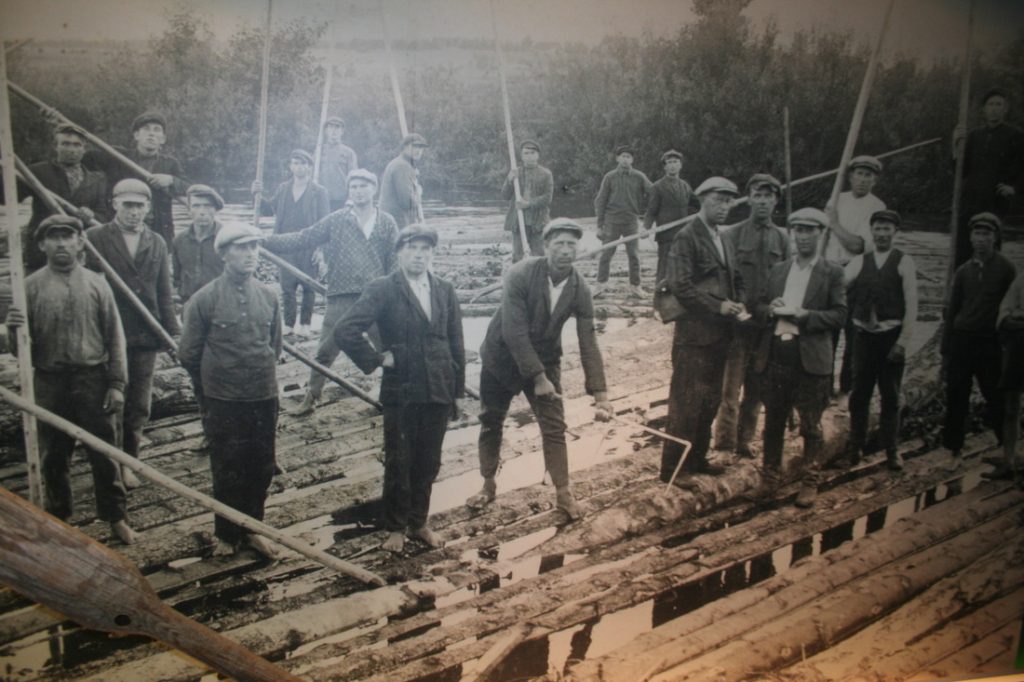During the times of Russian Empire and even after world war I, It was a common practice to transport wood using wide rivers usually in the spring, summer time. Forest wood was tied together to form rafts and several skilled people would guide them to their destination. Smaller rivers were used also, firewood and smaller logs were formed to rafts 2-3 meters wide and transported in rivers like Merkys, Ančia or Ūla. Along the way there were reweaving stations where rafts would get disassembled and reformed again, these places were Merkinė, Dubaklonys, Jonionys and Netiesos.
Raftsmen were categorized into 3 groups, the people that sailed the rafts, weavers and men that would cut and prepare timber for rafts. Due to the difficulty of the job, raftsmen were known to have higher salaries than the rest. In the older times timber rafting was performed by private merchants but this changed in 1928 when the business was taken over by the forest department.
To operate and tie down logs together required upwards of 20 men. At the reweaving stop a temporary dam was assembled to stop the rafts, then timber would get untied, organized by their length and retied again. Metal wire was added across the width of the raft ensuring that it wouldn’t fall apart, longer logs were used for the outside to not damage inside wood. One raft usually consisted of about 10 logs in Nemunas river and was called a bed. Typically raftsmen sailed with 10 beds at a time, which was roughly 150 cubic meters of timber. Dry wood was pilled on top of beds and protected with a roof form rain.
Rafts were controlled by installing steering at the front and back of the convoy. Front was especially important, it was the designated captain’s place white the back was controlled by a newcomer. Rafts also had breaks in the form of poles and guiding ropes called “Barbora”. Convoy was spilt up into 6 or 7 rafts, so that if one was to encounter shallow waters others could help and continue. During the times of Russian empire, convoys had a main captain in charge of the whole operation.
Luck was a big contributing factor in raftsmen success. During the days of great weather and minimal wind intervention, rafts could sail for Merkinė to Kaunas in a space of one and a half days. However, if the group encountered shallow waters, banks and bad weather the journey could take up to three weeks. Usually, one raftsman could complete 10 trips from Merkinė to Kaunas in one season.

